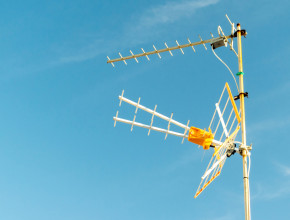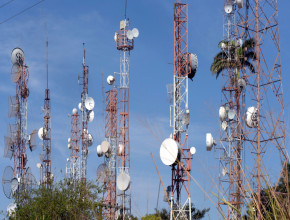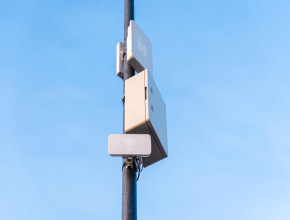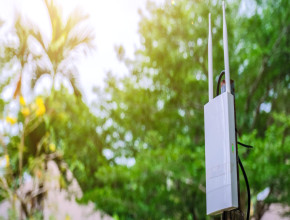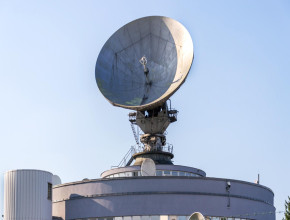
Antennas come in various shapes, patterns, designs, and sizes. Every type of antenna has different features and can be used for various tasks. One of the most popular kinds of antennas is the Directional Antenna. This antenna transmits and receives signals from a particular direction. The signal pattern in a directional antenna has a shape like that of a cigar.
In this blog, we will discuss directional antennas in detail with their kinds, benefits, and drawbacks. We will also discuss many things related to this antenna.
What is a Directional Antenna?
All the signal patterns in a directional antenna look the same from all sides. They normally have small side lobes that are ignored. The shapes, sizes, and patterns of directional antennas vary in every case as per the purpose.
The type of setup in a directional antenna differs in various applications. Smart antennas cover a wide range or area. They are generally used to provide coverage for broadcast and other applications.
Types of Directional Antenna
After discussing the meaning of a directional antenna, let us discuss the kinds of directional antennas in detail:
1. Panel antennas
Panel antennas are generally used in mobile base stations and cellular stations. They operate at Ultra high frequencies or UHF. A panel antenna does not run smoothly at high or lower frequencies because of mechanical size.
This antenna is normally constructed in the form of multiple bays. Each bay includes an individual dipole kept before a shared reflector with all the bays connected to boost the strength of the signals.
2. Yagi antenna
The Yagi antenna is also known as the Yagi-Uda antenna. It is a kind of directional antenna that emits signals in one direction. The antenna contains a long transmission line with a single driven element including 2 rods connected on any one side of a transmission line.
Yagi antennas have one reflector and 2 directors. They are sensitive to incoming electromagnetic field energy in the same direction. It is one of the most popular antennas used for TV reception and other commercial applications where an RF antenna with high gain is required.
3. Parabolic grid antenna
The next type of directional antenna is a grid parabolic antenna. It contains high gain and directivity and uses parabolic reflectors. These reflectors have a curved surface with the cross-sectional shape of a parabola to direct the radio waves.
A parabolic reflector provides easy beam adjustment. You can use a parabolic grid antenna for an LTE modem, WiFi device, or booster.
4. Patch antenna
The last type of directional antenna is a patch antenna. It has a low profile that you can mount on a surface. This antenna contains a sheet or a patch of metal with shapes such as triangular, planar rectangular, or circular. This sheet of metal is mounted on a large sheet of metal known as a ground plane.
Normally, a patch antenna is used in indoor areas such as small studios, offices, workspaces, and small stores.
Advantages of Directional Antenna
A directional antenna emits signals in one direction. It is generally used for broadcast and other applications. Now, let us discuss the various benefits of directional antennas in this section:
-
Improves Target Direction
This antenna improves the signals from the target direction via a directivity gain. This directivity gain is reduced from other directions. As a result, the interference from other directions is reduced. You will gain better signal strength by using a directional antenna in various applications.
-
Wider Reach
A high-gain Yagi antenna gives a wider reach to emit signals in the area. It generally includes a radius between 45 and 90 degrees to pull signals effectively from one direction. The signals of a directional antenna are emitted in a narrow field and offer a wider range.
-
Good For Remote Areas
One of the major benefits of using a directional antenna is that it can be used in rural areas and remote villages. This antenna covers a wider range and offers great coverage of signals. As the distance between houses is less in rural areas, directional antennas are widely used in cell towers in remote villages and rural areas.
-
Best Market Share
ILS Antenna has the reputation of best antenna in the market. It is generally used in many public places. These antennas give a large market share day by day.
-
Stores Energy For The Future
Directional antennas save energy for the future. They work even in short distances and consume less energy. As a result, the energy is saved for the future. Apart from that, the antenna also reduces the overall cost included in the transmission of signals over a long distance.
-
Strong Signals
Directional antennas have a higher output than other kinds of antennas. Due to high output, the directional antennas give more signal output than other types of antennas. Besides, the power of the transmitter in a directional antenna is also higher than the receiver which gives better signal strength.
Disadvantages of Directional Antenna
Just like advantages, directional antennas also have a few disadvantages such as:
-
Emits Signals Only For One Carrier
A directional antenna can emit a signal only for one carrier. This is the reason why directional antennas are not used often in urban centers or cities as there is a long distance between buildings in urban areas.
-
Not Suited For Outdoor Applications
You can use a directional antenna only in indoor applications. It is because it emits signals only in one direction. You can use a High Gain Helical Antenna for TV broadcast and reception and cell towers. It is not perfect to use in outdoor areas.
Final words
This is all about a directional antenna, its features, benefits, and drawbacks. It helps to emit signals from one direction and can be used in many indoor applications. You can use this antenna in TV station to get better signal strength. It is widely used in small offices, workplaces and other small spaces with a limited distance.

